Dear Artist,
Creativity researchers at the UCLA are continuing their decades-long studies of the biological origins of creativity. By testing what they call the “Big C” – exceptionally creative visual artists and scientists – scholars are inching closer to discovering how creative brains are different. Researchers tested Big Cs against another group qualified with only a very high IQ; the brain scans revealed the differences between being super smart and super smart, plus super creative.
Not surprisingly, these brain images have shown that rather than following known paths and connections in brain activity and routes, highly creative people seem to prefer to forge their own roads. Often less efficient but full of novelty, these roads between regions in the brain are more specific, random and varied. Researchers observed that highly creative people were more likely to bypass the usual big hubs between brain regions, opting for a “road less travelled” and arriving in surprise locations. Big Cs were also extremely efficient at processing while at rest, but worked harder and longer at creative problem solving. Based on areas of competence and creative expertise, Big Cs took less time and energy at specific tasks, but took the long route when it came to broad and abstract idea generating.
Regardless of whether or not you might be a Big C, consider consciously applying the rules of the road less travelled to your outside world, to see if you can get to moseying around in your skull. “Never, ever backtrack if you can at all help it,” said my Dad to me often, while mosey-driving. Also, “When looking through the viewfinder of your camera, keep your other eye open, should something go flying by in the periphery.”
Sincerely,
Sara
PS: “Our results showed that highly creative people had unique brain connectivity that tended to stay off the beaten path.” (Ariana Anderson, professor and statistician at the Semel Institute for Neuroscience and Human Behavior, UCLA)
Esoterica: If observation is one trigger for a novel idea, veering off the beaten path is an obvious choice. This less-travelled road can then become a creative habit – and one that can provide a lifetime of invention and a muscle memory for summoning new thought or for cultivating an evolving mind. “The painter unfolds that which has not been seen,” wrote Paul Cezanne. For today, let go of your knowns, preferences and systems of execution. Take the tertiary road to your proverbial Humptulips. Turn over a mossy rock. For the purpose of inviting aesthetic experience, for conjuring art, “Everyone is in the best seat.” (John Cage)
Have you considered a Premium Artist Listing? With each letter, an artist is featured at the bottom of this page. The Premium Artist Listings are a means of connecting artist subscribers through their work. Proceeds from each listing contribute to the production of The Painter’s Keys.
“Only a new seed will yield a new crop.” (Maharishi Mahesh Yogi)
Featured Workshop
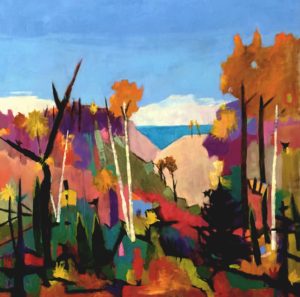 Permission to Paint Expressively Series Session 1
Permission to Paint Expressively Series Session 1
June 27-30, 2022
Join Ellie Harold for “Expressive Painting: Color from the Inside Out.” Do you struggle with color? For chromophobics or anyone who would like greater freedom in their use of color, this workshop focuses on activating and applying your innate color sense. Content, process and lightly structured exercises allow you access to a wider range of color expression in the safe space of Ellie’s studio, located only 3 blocks from Lake Michigan near Sleeping Bear Dunes. “Expressive Painting: Color from the Inside Out” has the potential to transform not only your art but your life! Details and registration at www.EllieHarold.com.
Featured Artist
Sometimes we see what no one looks for–images that have waited for us to find them. If we are lucky, these images will wait while we try to capture them with paint on canvas. They will probably change as we reach for them. I believe that if we clearly and honestly record what we see, we will be surprised, enriched, and sometimes stunned by what we’ve found.
There is almost always a narrative in my paintings as I believe that a story may be introduced in a scene. The viewer must fill in the before and after with unique eyes and experience, but enough can be presented to set a challenging stage if the work is successful.
Along with being a visual story teller, I’ve been called a colorist, surrealist, patternist, and sometimes a texturist. I’m an Atlanta artist–an oil painter for over twenty-five years–with a studio in Brookhaven. I love working with oils because each painting session results in a new revelation of what they might do. There is a mystical quality to each painting and each day for me.

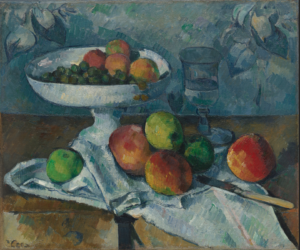
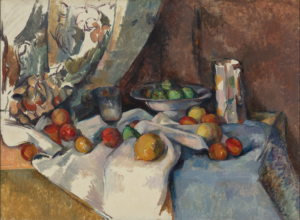
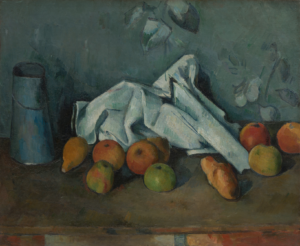
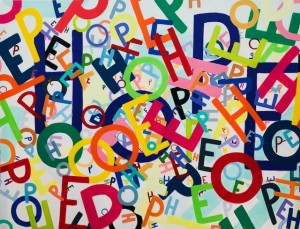
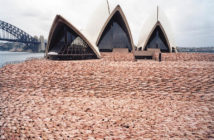
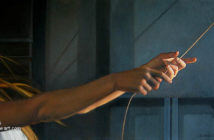
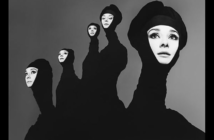
8 Comments
This is such a great letter Sara! I love Cézanne. I love to mosey. I love the idea that everyone has the best seat! And I love most of all solving painting problems for some random idea that has unexpectedly forged its way into my peripheral consciousness. The notion of having one eye taking in what is in front of us and the other scanning the outer edges is so appropriate for the creative process. I have spent this fall and winter formally studying contemporary landscape painting with the Vancouver Island School of Art looking for a solution to best render my “red line” series about the immediate climate crisis. I have a way forward and some five new painting completed but the other odd bits I discovered, unrelated to my central challenge, might possibly be the long lasting creative gems. All the best for the week ahead and moseying adventures!
I have been following research on the brain and thinking for some time now, and your article is a really important inclusion, Sara. The human mind is absolutely amazing in the way it makes neural connections and pathways through the brain to solve problems, find meaning, and create understandings. What artists do is often follow sensory paths rather than logical ones. We choose the way less understood, more felt. And therein lies all the difference.
So well said. And something for every artist to keep in mind when it seems that everyone values the logical path over the one that demands openness to feelings and ‘impractical’ ideas. The sensory path is not simply a pleasant diversion from what really matters–it is the incubator for innovation, invention and the ineffable experiences that give human life meaning by driving the creativity that gives us hope.
After reading this and the comments, I’m now inspired to go off my own beaten path. For some reason painting a red hibiscus in a tahini jar makes a lot of sense to me. (Made some hummus with the last of the tahini and there’s one beautiful red hibiscus blooming in our yard! ) Yrs ago, I painted a still life of some wildflowers in an atlas jar. It was right after receiving a warning from code enforcement to cut our overgrown lawn with it’s numerous wildflowers! Not wanting those flowers to go to waste, I went out and picked as many as I could before my hubby cut them all down with his mower! I was thrilled when that painting, with the accompanying story sold within a few days!
Nina – could you explain the code enforcement reference please? Are there rules and regulations about keeping your grass cut where you are? Here in England there is a growing trend towards ‘rewilding’ whereby we are actually encouraged to let our lawns grow in order to encourage wildlife.
And it helps the creative person to keep a journal!?! I am in the process of archiving the tasty bits from 42 years of journal/drawing keeping, and from my perch of 80 years old, I am seeing threads and concerns that have occupied me for all my life as an artist. I am limited with what I can do now, but what a pleasure it is to still mull over the high points (and low) of my creative process. A valuable source of thought and application is right now at my fingertips.
“…highly creative people seem to prefer to forge their own roads. ” Go figure. Having an imagination is also quite useful. Outstanding achievements in any field usually employ one particular ‘ingredient’. Originality. Sadly, these days, especially in Television, we are inundated with an appalling number of re-boots, re-makes, outright ‘copycat’ versions of series and so-called Reality Shows all of which originated in other countries. As for “highly creative people (who) seem to prefer to forge their own roads” there are many among us who found ourselves “off the beaten path” through circumstances or events over which we had little control, if any. In my case, when folks tell me I have a rather unique way of looking at things, I usually tell them that “I was dropped on my head several times before I even learned to talk”. Sometimes they don’t see the humor in that, sometimes they do. Whatever they say next is *always* very telling. People react to things differently. Creative people react to the world about them. They also react to the world within themselves. Myself, I don’t really think being “super smart” has that much to do with it.
It takes courage to stay off the beaten path when those around you are sticking to the same old “rules” of composition, colour and subject matter !
So many paintings are clichées of what has been done over the centuries . No wonder Basquait hit the art scene with a welcome splash ! One wonders what he would have done had he lived longer.
Expressive work like his is not easily welcomed in small cities or among small minds. Highly creative minds are often scoffed at.
This is sometimes enough for an artist of this ilk to hide his or her wildly personal forays from possible criticism by his or her peers.